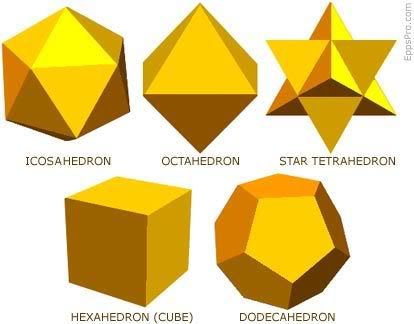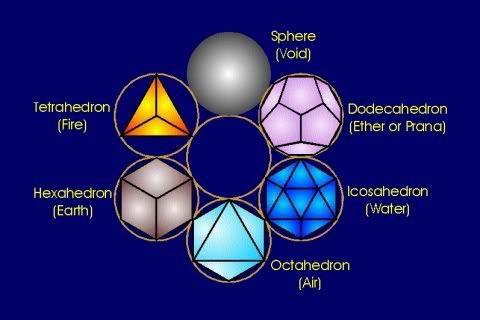-
Royal
- Posts: 10565
- Joined: Mon Apr 11, 2011 5:55 pm
Post
by Royal » Wed Feb 29, 2012 8:48 am
A platonic solid is a convex multifaceted 3-D object whose faces are all identical polygons, with sides of equal length and angles of equal degrees. A Platonic solid also had the same number of faces meeting at every vertex. The best known example of a Platonic solid is the cube, whose faces are six identical squares.

The ancient Greeks recognized the five Platonic solids in Timaeus in around 350 B.C.. He was not only awestruck by their beauty and symmetry, but he believed that the shapes described the structures of the four basic elements thought to compose the cosmos.

Plato decided that God used the dodecahedron for arranging the constellations in the heavens. Pythagoras of Samos - The famous mathematician and mystic who lived in the time of buddha and Confucius, around 550 B.C. - probably knew of three of the five Platonic solids (the cube, tetrahedron, and dodecohedron). Slightly rounded versions of the platonic solids made of stone have discovered in areas inhabited by the late Neolithic people of scotland at least 1,000 years before plato. The German astronomer Johannes Kepler (1571-1630) constructed models of Platonic solids nested within one another in an attempt to describe the orbits of the planets of the sun Although Kepler's theories were wrong, he was one of the first scientists to insist one a geometrical explanation for celestial phenomenon.

